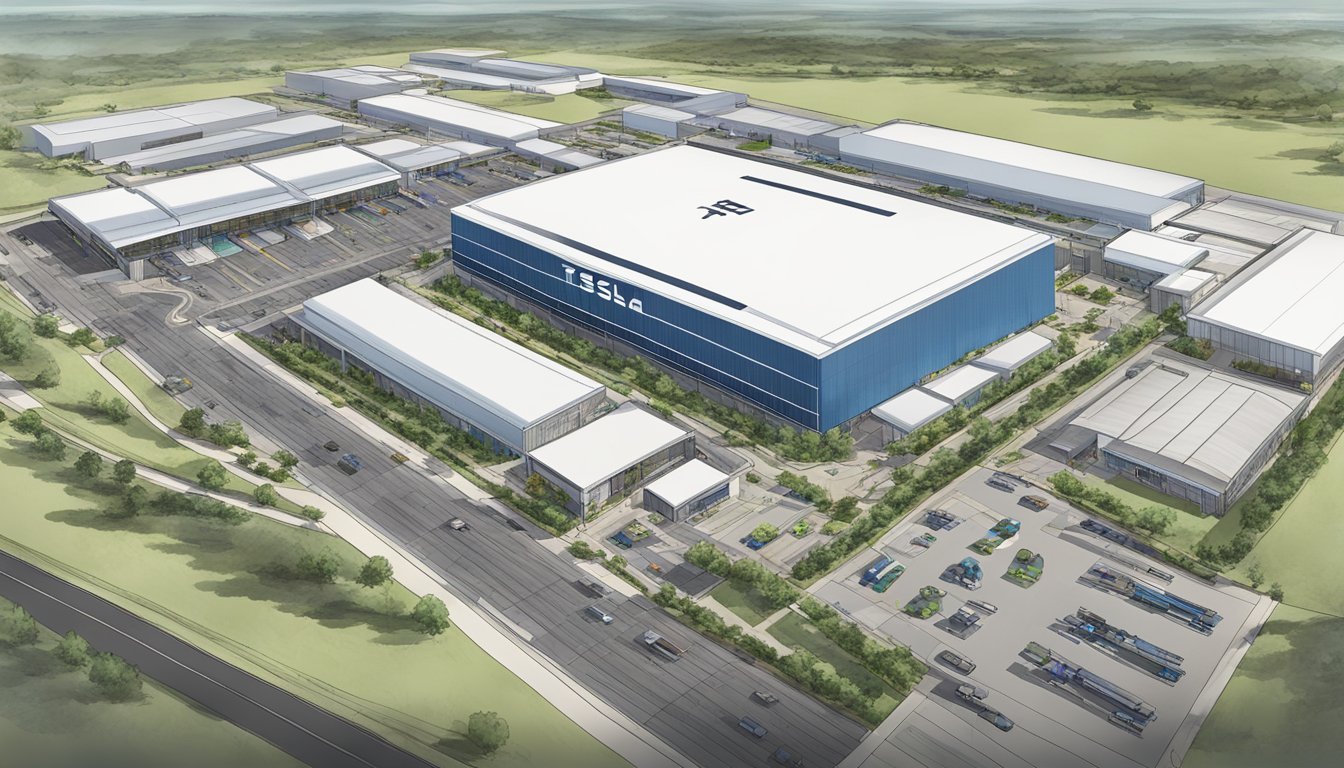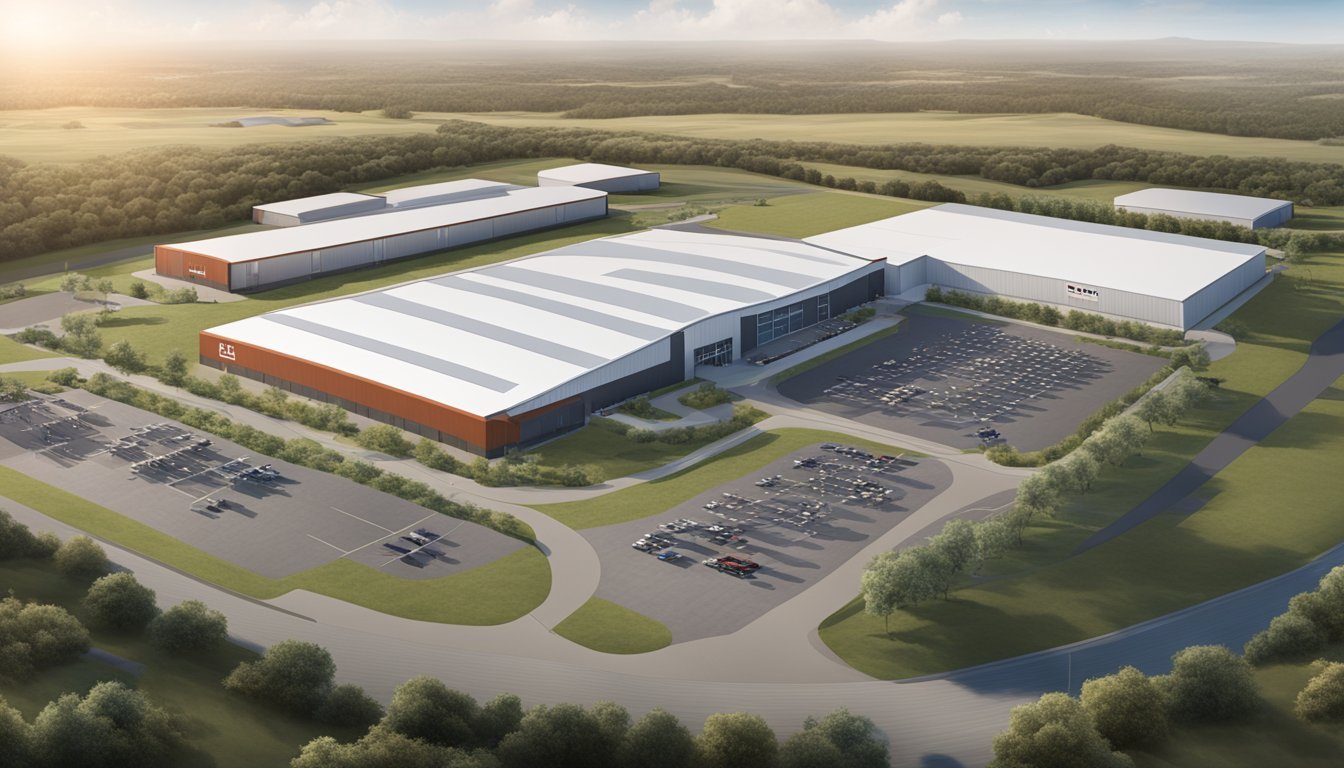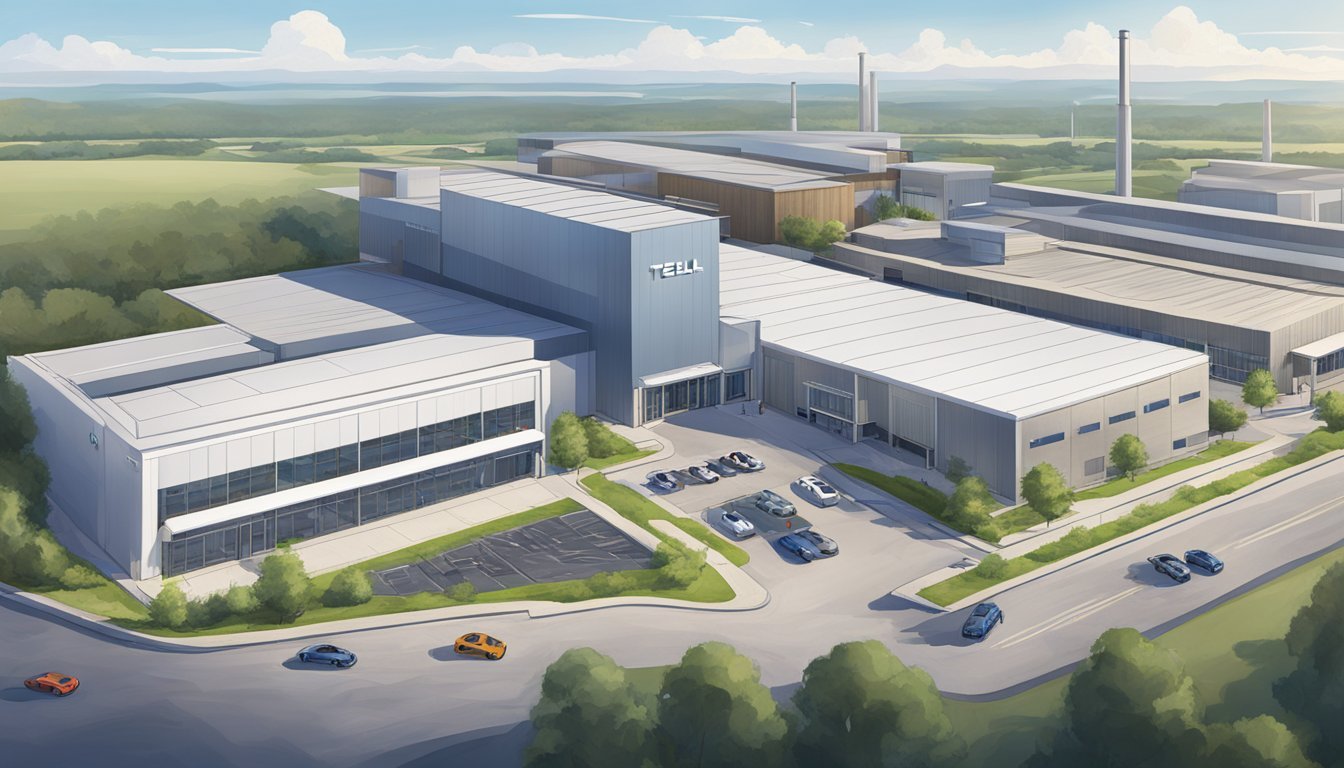Tesla's Giga Texas Expands to 12 Million Sq Ft: Austin's EV Giant Grows Bigger!
Tesla's Gigafactory Texas stands as a colossal testament to the company's ambitions in electric vehicle manufacturing and sustainable energy. Located just outside Austin, this sprawling facility serves as Tesla's global headquarters and main U.S. production hub for the Model Y and upcoming Cybertruck. The Giga Texas plant currently spans over 10 million square feet of factory floor space, covering approximately 2,500 acres along the Colorado River.
As global demand for electric vehicles continues to surge, Tesla has set its sights on expanding this already massive facility. Recent filings with the Texas Department of Licensing and Regulation reveal plans to increase the square footage to over 12 million. This expansion aims to boost production capacity and accommodate new manufacturing lines, potentially including those for the highly anticipated Cybertruck.
The sheer scale of Giga Texas underscores Tesla's commitment to large-scale, sustainable manufacturing. With its vast solar arrays and advanced production technologies, the facility embodies the company's vision of accelerating the world's transition to sustainable energy. As Tesla continues to grow its footprint in Austin, the Gigafactory is poised to play an increasingly crucial role in shaping the future of electric mobility.
Overview of Tesla's Giga Texas
Tesla's Gigafactory Texas, also known as Giga Texas or Giga Austin, is a massive automotive manufacturing facility located in Travis County, just outside Austin, Texas. The factory spans an impressive 2,500 acres along the Colorado River.
Construction of Giga Texas began in July 2020, marking a significant milestone in Tesla's expansion plans. The facility boasts over 10 million square feet of factory floor space, making it one of the largest buildings in the world by footprint.
Giga Texas serves as a manufacturing hub for Tesla's Model Y electric vehicle and is the production site for the highly anticipated Cybertruck. The factory's strategic location enhances Tesla's ability to meet growing demand in North America.
Tesla continues to expand the facility, with recent reports indicating plans for additional square footage. A building permit filed with the City of Austin reveals a proposed 107,000-square-foot single-story expansion.
The Gigafactory employs thousands of workers across various skill levels and backgrounds. Tesla emphasizes its inclusive hiring practices, welcoming individuals from diverse industries and educational backgrounds.
Giga Texas represents a significant investment in American manufacturing and showcases Tesla's commitment to increasing its production capacity. The facility's enormous scale and ongoing expansion efforts underscore the company's ambitious growth strategy in the electric vehicle market.
Significance of the Austin Location
Tesla's choice of Austin for its Gigafactory Texas highlights the city's strategic importance. The location offers key advantages that align with Tesla's goals and vision for growth.
Access to Engineering Talent
Austin boasts a thriving tech scene and prestigious universities, providing Tesla with a rich pool of engineering talent. The University of Texas at Austin and other local institutions produce skilled graduates in fields like electrical engineering and computer science.
Tesla can tap into this talent pipeline to drive innovation in electric vehicle technology and sustainable energy solutions. The city's growing reputation as a tech hub also attracts experienced professionals from across the country.
This concentration of expertise enables Tesla to accelerate research and development efforts at Giga Texas. The company can more easily recruit top-tier engineers and researchers to work on cutting-edge projects in automotive design, battery technology, and autonomous driving systems.
Contribution to Sustainable Energy
Giga Texas plays a crucial role in Tesla's mission to accelerate the world's transition to sustainable energy. The factory produces electric vehicles and energy storage systems, directly contributing to reduced carbon emissions.
Austin's commitment to renewable energy aligns with Tesla's goals. The city aims to achieve 100% carbon-free electricity generation by 2035. This synergy creates opportunities for Tesla to collaborate on local sustainability initiatives.
The factory's large-scale production of electric vehicles helps make sustainable transportation more accessible to consumers. By manufacturing cars closer to key markets, Tesla reduces shipping distances and associated environmental impacts.
Giga Texas also serves as a showcase for Tesla's sustainable manufacturing practices. The facility incorporates solar panels, rainwater harvesting, and other eco-friendly features, demonstrating the company's commitment to responsible production methods.
Design and Construction of the Factory
Tesla's Gigafactory Texas project is a massive undertaking, involving complex design and construction processes. The facility's layout, size, and building timeline have been carefully planned to meet Tesla's ambitious production goals.
Building Permit and Regulations
Tesla obtained the necessary building permits for Gigafactory Texas in July 2020. The company worked closely with local authorities to ensure compliance with Austin's building codes and environmental regulations. The permits covered various aspects of construction, including structural work, electrical systems, and environmental impact mitigation.
Tesla's plans included measures to protect the nearby Colorado River and local wildlife habitats. The company also committed to using sustainable construction practices and materials where possible.
Square Footage Specifics
Gigafactory Texas spans an impressive 2,500 acres along the Colorado River. The main factory floor covers over 10 million square feet, making it one of the largest manufacturing facilities in the United States.
The factory complex consists of three primary buildings:
First structure: 1.7 million square feet
Second structure: 900,000 square feet
Third structure: Size not specified in available data
These buildings are designed to house various production lines, including those for the Model Y and Cybertruck.
Construction Timeline
Construction of Gigafactory Texas began in July 2020, shortly after the site was announced. Tesla adopted a parallel construction approach, working on all three main buildings simultaneously to accelerate the project timeline.
Key milestones:
July 2020: Groundbreaking and site preparation
Late 2020: Foundation work and initial structural elements
Early 2021: Major structural components in place
Mid-2021: Installation of production equipment begins
Late 2021: First vehicles produced for testing
Drone footage captured throughout the construction process showed rapid progress, with the facility taking shape in a matter of months. Tesla's goal was to achieve initial production capacity by the end of 2021, with full-scale operations ramping up in subsequent years.
Production Capabilities and Processes
Tesla's Austin Gigafactory boasts impressive manufacturing capabilities, focusing on electric vehicle production and energy storage solutions. The facility leverages advanced automation and innovative techniques to meet global demand for Tesla products.
Assembly Lines for Model Y and Cybertruck
The Austin Gigafactory houses state-of-the-art assembly lines for the Model Y and Cybertruck. These lines utilize robotics and AI-driven processes to ensure high-quality production. The Model Y line has been operational since the factory's opening, with a capacity to produce hundreds of thousands of vehicles annually.
The Cybertruck assembly line, still in development, incorporates specialized equipment to handle the vehicle's unique stainless steel body. Tesla has implemented lessons learned from previous factories to optimize efficiency and reduce production bottlenecks.
Both assembly lines feature advanced paint shops and final testing areas to maintain Tesla's quality standards.
Energy Storage Solutions Manufacturing
A significant portion of the Austin Gigafactory is dedicated to energy storage production. This includes the manufacturing of Powerwall and Megapack units for residential and commercial applications.
The energy storage production area employs cutting-edge battery cell technology and automated assembly processes. Tesla's vertical integration allows for rapid iteration and improvement of battery designs.
Key components:
Battery cell production
Pack assembly
Power electronics integration
Quality control and testing
Expansion Plans and Future Growth
Tesla's Austin Gigafactory has room for expansion to meet increasing global demand. The company has plans to scale up production capacity for both vehicles and energy products.
Future growth initiatives include:
Increasing Model Y production rates
Ramping up Cybertruck manufacturing
Expanding battery cell production capabilities
Introducing new vehicle models
Tesla continually evaluates market demands and adjusts its expansion plans accordingly. The Austin facility's flexible design allows for rapid reconfiguration of production lines to accommodate new products or increased output requirements.
Tesla's Impact on Austin and the Auto Industry
Tesla's Gigafactory in Austin has transformed the local economy and advanced electric vehicle technology. The massive facility has created thousands of jobs and attracted automotive suppliers to the region.
Employment Opportunities
Tesla's Austin Gigafactory has generated significant employment in the area. The 2,500-acre facility along the Colorado River employs thousands of workers across various skill levels and backgrounds. Tesla actively recruits locally, creating opportunities for Austin residents in manufacturing, engineering, and support roles.
The factory's presence has also spurred job growth in related industries. Automotive suppliers have established operations nearby to serve Tesla, leasing hundreds of thousands of square feet of industrial space. This "magnet effect" has further boosted employment and economic activity in the Austin region.
Advancements in EVs
The Austin Gigafactory plays a crucial role in Tesla's EV production and innovation. The facility manufactures the popular Model Y SUV and will be the home of Cybertruck production. Its advanced manufacturing processes, including giant casting furnaces, enable more efficient vehicle production.
Tesla's Austin operations have accelerated EV adoption and technological progress. The factory's high-volume output of affordable Model Y vehicles has made EVs more accessible to consumers. Future production of the Cybertruck and Semi at the site will expand Tesla's impact on the truck and commercial vehicle segments.
The Gigafactory's scale and capabilities have raised the bar for EV manufacturing globally. Its innovations in production techniques and vehicle design continue to influence the broader auto industry's shift towards electrification.
General Assembly and Production Milestones
Tesla's Gigafactory Texas has rapidly progressed from initial construction to active production. The facility has achieved several key milestones in its general assembly operations and vehicle rollouts.
Initial Rollouts and Deliveries
Tesla began limited production of Model Y vehicles at Gigafactory Texas in late 2021. The first deliveries of Texas-built Model Ys took place at the factory's opening party in April 2022. This event marked a significant achievement, transitioning the facility from construction to active manufacturing.
Production has since ramped up, with the Model Y becoming the primary vehicle manufactured at the site. The factory has also prepared for Cybertruck production, with prototypes spotted on the premises.
Rendering to Reality: Milestones Achieved
Gigafactory Texas has transformed from architectural renderings to a fully operational facility in a remarkably short time. The main building now spans over 10 million square feet of factory floor space.
Tesla filed a permit in 2024 to expand the general assembly area by an additional 500,000 square feet. This expansion aims to enlarge the General Assembly 2 and General Assembly 3 operations.
The facility has also made progress on other planned vehicle lines. While specific production figures are not publicly available, the factory is gearing up for Cybertruck manufacturing and has the potential to produce the Tesla Semi in the future.








